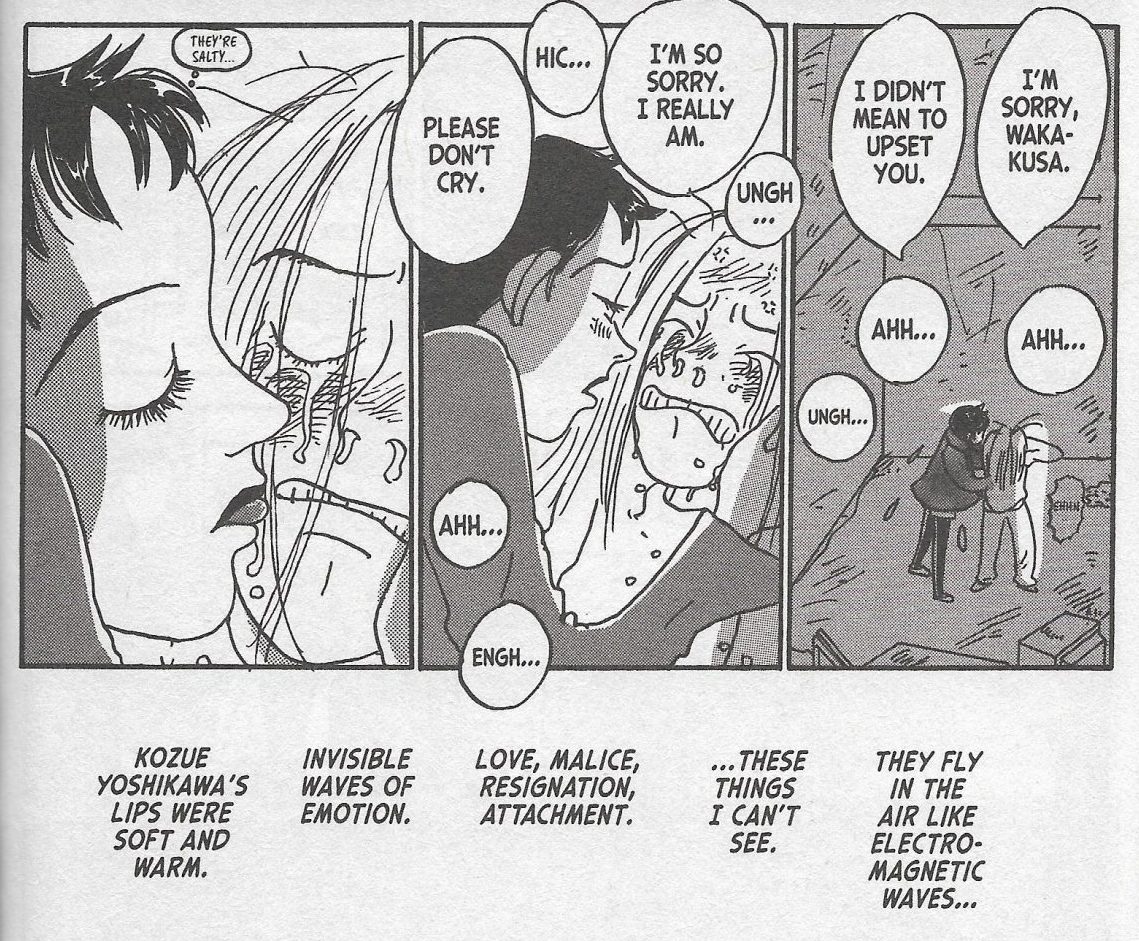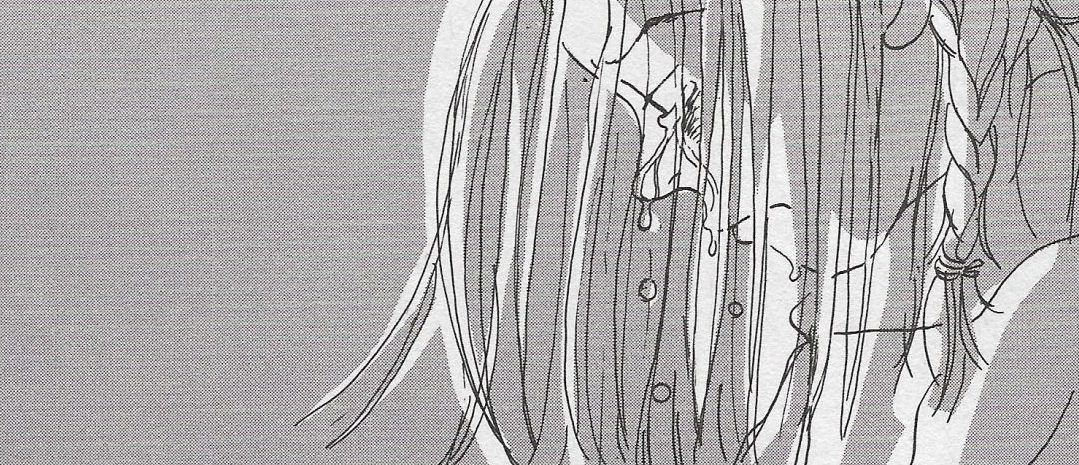We never learn whose corpse it was. There is a rotting body without a past, no present condition beyond its state of decay. This is not a person. This is a location.
Visiting the corpse is an escape for three teenagers: Haruna, an anxious but nominally popular girl frustrated by her obsessive sex-ravenous boyfriend; Yamada, a cynical, guarded boy bullied by his peers for his effete, handsome looks, whose homosexuality is a closely-guarded secret; and Kozue, a teen actress quietly in and out of the nurse’s room, wracked by private pains and an eating disorder. Yamada was the first to find the body, lying among the sprawling overgrowth of their city's polluted shoreline, where towering weeds and grasses hide the earth. The body lies in the heart of a place where the youths cannot be found by their peers; where they can be unseen and unknown.
Death appeals to the kids, maybe because their malaise is akin to a living death, or maybe because of some other death within them, unlovable and unknowable. But maybe it's that death is something difficult to talk about, hard to understand, sticking out amid the painful coherence of high school, the fascism of linearity. Being near death is a form of being somewhere else. The dead body is something that allows them to feel unseen, and be unseen, because it is something whose discovery truly cannot be allowed. It's the only secret that they will ever really have to keep. However, keeping a secret is not the same as having privacy. While the kids are never seen with the body, they can be seen coming and going from the marsh - and seen they are, and talk spreads that Yamada is fooling around with girls under the cover of the unkempt shoreline.
River's Edge could be called a manga about surveillance. Everyone the teens know is watching their steps. Nothing they do can fail to reach the ears of jealous peers who enforce partnerships with their estranged lovers with a controlling grip, with the coherence of their self-image at stake. Haruna’s boyfriend, Kannonzaki, demands sexual gratification to validate his social standing. Yamada’s girlfriend, Kanna, needs to prove to herself that Yamada really loves her to quell the rumors of his supposed womanizing, which eat away at her self-worth. Their insecurities are a tyranny: paranoid, jealous delusions which cast a homosexual and a few battered girls as sticks for kindling in the service of upholding an irrational normalcy dependent on being adored. Violence is the solution to resolve anxieties about a slender, fake social order. This is what adolescence is for many - a time when the contradictions of being are reified. Adolescence is when the bodies are found and hidden.
Long before the closing pages of this graphic novel, the kids are forced to bury their beloved corpse as an unrelated urban legend leads to their classmates combing through the seaside thickets en masse for weeks, hunting for treasure that isn't real. Without the corpse, the hidden space of a dead body becomes a place of living encounters, secrets actually being made. Violence erupts where the body once laid - abuse, assault, coercion, death and destruction. Violence ends the timeless state of decay, time restarts and the place’s meaning disintegrates. The body is never found, and nobody’s secrets are ever revealed. Everyone moves on, and the horrid stakes of high school itself are sure to evaporate after the kids move past the closing pages of the comic. The corpse remains in the ground and becomes part of the soil.
River's Edge tells a complex story, full of incidents and characters that crackle to an explosive pitch from myriad particularities, misunderstandings, stresses and chance encounters. To summarize the plot would be to take on the cadence of high school gossips: "and then SHE was TRYING to -- but HE thought -- and her PROBLEM was -- and who would have EVER THOUGHT SHE WOULD do THAT to HIM?" This would obfuscate the literary nuance of the work, yet it is very much Kyoko Okazaki's intention: to present a work that if told as a story alone is the sensationalism of accumulated rumors. Drama isn't the function of River's Edge, but rather its atmosphere; these young people are submerged in gossip. It's the story of stolen moments of solace amid something that can't be spoken of, the one place where eyes and voices cannot reach perhaps, and yet the very birthplace of secrets.
Okazaki’s slender minimalist penmanship lends those secrets a certain sexiness, an air of fantasy and sensual presence as much of a piece with the paintings of Egon Schiele as with the fashion illustrations and pop culture iconography the comic more explicitly evokes. In every pen stroke, in every dash of screentone, there is a physical feeling of hunger, of grabbing fistfuls of desired objects and still lacking; malnourished stomachs sulking under oversized jackets, eyes bulging and pupils dilating with unspeakable urgency.
Perhaps River's Edge is itself an outlandish rumor, an elaborate rationalization of an inexplicable public trauma with shocking secrets kept by the only people who ever seemed to slip out of sight, filling the gaps of all the times that nobody saw and nobody heard. Or, perhaps, River's Edge is a recovered memory, or a story told to you by a long-estranged friend about what happened at school when you weren't there, the reason why that oppressive silence hung in the air while you suffered your own private hell in ignorance. Or, perhaps, River's Edge is a naïve erotic fantasy - a world ruled not by adult restrictions or negligence but by budding desires, fierce passions pitted against profound disaffection, where escape is narrowly possible and a dead body is the reason that your friend is an asshole. It's a comic full of longings, fantasies, resentments and memories that are pushed down with age, but still hurt somewhere. It's a comic about teenagers, a comic set around a corpse.













